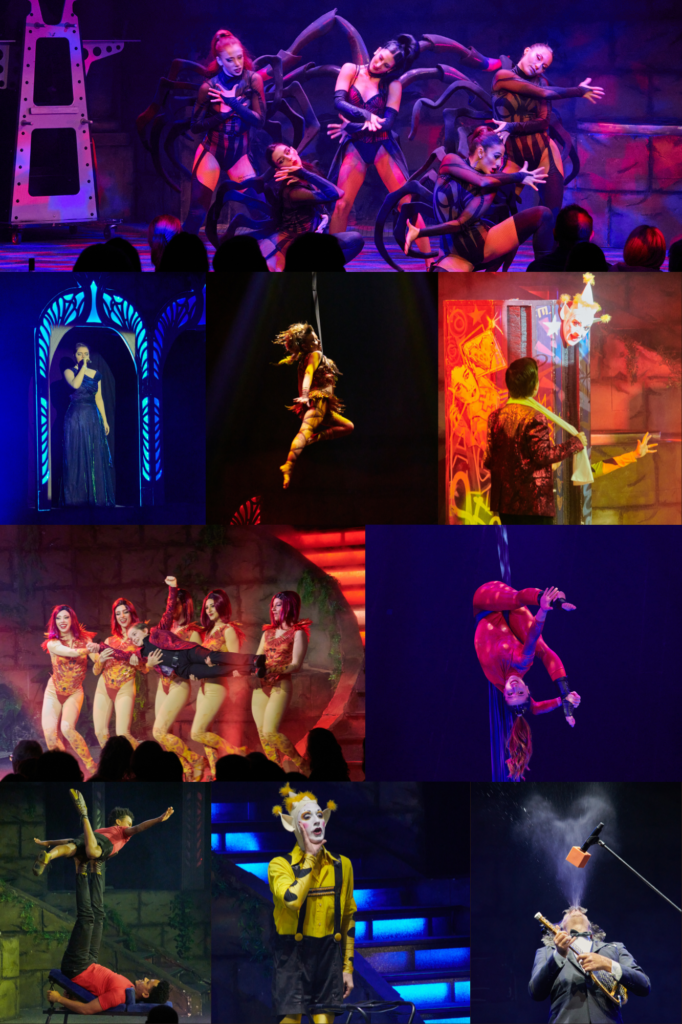Evolution of Familie Sarrasani Performances Through the Decades
The Familie Sarrasani circus is a legendary name in the entertainment world, with a history spanning over a century. Founded in 1901 by Hans Stosch-Sarrasani in Dresden, Germany, the circus quickly gained fame for its innovative performances, grandeur, and ability to adapt to changing times. Over the decades, the Sarrasani family has transformed its shows to cater to new audiences, blending tradition with modernity while preserving its core values. Here is a look at how Familie Sarrasani performances have evolved through the decades.

The Early Days: Setting the Standard for Grandeur
In the early 1900s, Familie Sarrasani set a high standard for circus performances. Hans Stosch-Sarrasani, the founder, envisioned a circus that was not just about entertainment but also about creating awe and wonder. During this period, the shows featured traditional acts like acrobatics, animal performances, and clown acts, but with an added layer of elegance and sophistication.
What set Sarrasani apart was the scale of its productions. The circus introduced massive tents that could accommodate thousands of spectators, making it one of the largest circuses of its time. Additionally, Sarrasani’s use of exotic animals, such as elephants and tigers, added a unique appeal that drew large crowds.
The Golden Era: Innovation and International Recognition
By the 1930s, Sarrasani had become a household name not only in Germany but also internationally. The performances evolved to include more elaborate storytelling and theatrical elements. The circus began touring globally, performing in countries like Argentina and Brazil.
During this period, Sarrasani’s shows became known for their innovation. They incorporated complex stage designs, advanced lighting, and music to create an immersive experience. The circus also introduced multicultural themes, featuring performers from different countries and blending cultural elements into the acts.
However, the mid-20th century was also a challenging time for Sarrasani. World War II disrupted the circus industry, and the original Sarrasani tent was destroyed during air raids. Despite these setbacks, the family rebuilt the circus and continued to perform, showcasing their resilience and commitment to their craft.
The Transition Period: Balancing Tradition and Modernity
The 1960s marked a period of transition for Familie Sarrasani. As traditional circuses faced competition from new forms of entertainment like television and movies, Sarrasani had to adapt. The family introduced modern elements into their performances to keep audiences engaged.
Animal acts, which had been a staple of Sarrasani performances, became more focused on showcasing the animals’ natural behaviors rather than relying on tricks. This shift reflected a growing awareness of animal welfare. At the same time, the circus placed greater emphasis on human performances, including breathtaking acrobatics, tightrope walking, and aerial stunts, drawing even more attention from audiences purchasing Sarrasani tickets for these thrilling shows.
The 1970s and 1980s also saw Sarrasani experimenting with themed shows. These productions told cohesive stories and featured elaborate costumes and sets, blending circus acts with elements of theater and drama.
The Modern Era: Reinvention with Dinner Shows
In the 1990s, Familie Sarrasani underwent a significant reinvention. Recognizing the changing tastes of modern audiences, the family introduced the concept of dinner shows. These performances combined high-quality entertainment with fine dining, offering a unique experience that appealed to both traditional circus fans and new audiences.
The dinner shows featured a mix of circus acts, including acrobatics, juggling, and comedy, but with a more intimate and upscale presentation. This format allowed Sarrasani to stand out in the competitive entertainment industry and attract a broader audience.
Technology also became a key component of modern Sarrasani performances. Advanced lighting, sound effects, and multimedia elements enhanced the visual appeal of the shows. The circus continued to innovate, blending traditional acts with contemporary artistic trends.
Sarrasani Today: A Blend of Tradition and Innovation
Today, Familie Sarrasani continues to be a symbol of excellence in the circus world. While the shows have evolved significantly since the early 1900s, they still retain the charm and wonder that have always defined the Sarrasani name.
One of the hallmarks of modern Sarrasani performances is their ability to cater to diverse audiences. From family-friendly daytime shows to sophisticated dinner performances, Sarrasani offers something for everyone. The circus also places a strong emphasis on cultural inclusivity, featuring performers from around the world and incorporating global themes into their acts.
Sustainability is another focus for Sarrasani today. The circus has taken steps to reduce its environmental impact, including phasing out certain animal acts and adopting eco-friendly practices. This shift reflects the changing values of society while ensuring that the Sarrasani legacy remains relevant in the modern age.
Conclusion
The evolution of Familie Sarrasani performances over the decades is a testament to the family’s creativity, resilience, and dedication to their craft. From the grandeur of the early 20th century to the innovation of modern dinner shows, Sarrasani has consistently pushed the boundaries of what a circus can be.
As the entertainment landscape continues to change, Sarrasani remains committed to blending tradition with innovation, ensuring that their performances continue to captivate audiences for generations to come. For anyone seeking a unique and memorable experience, Familie Sarrasani is a name that delivers on its promise of world-class entertainment.














Post Comment